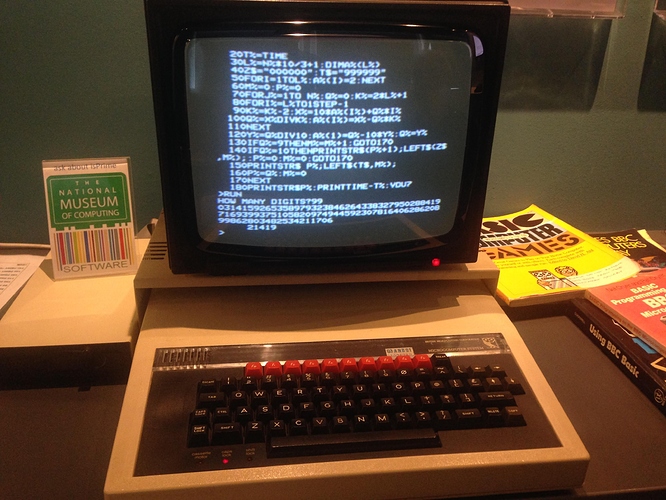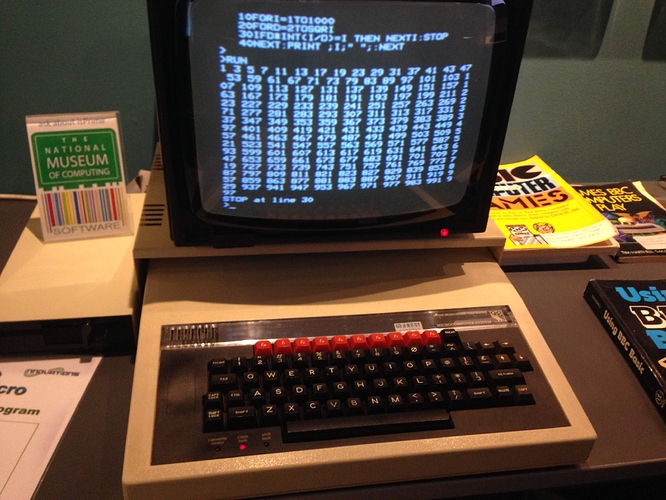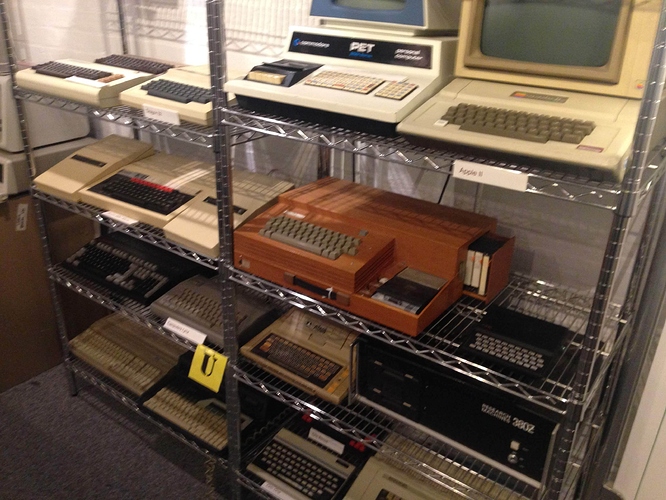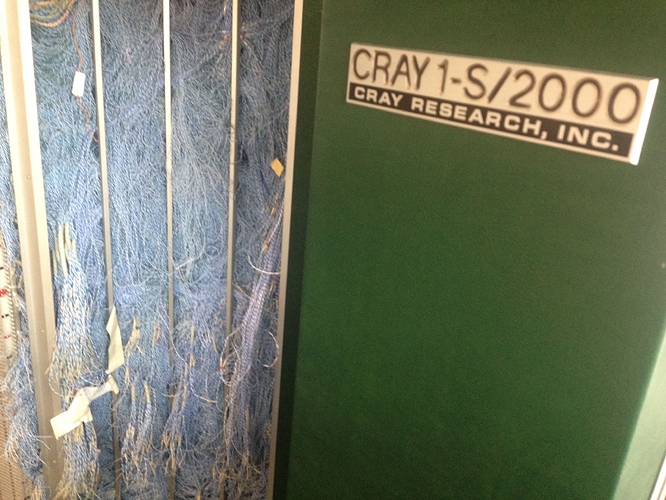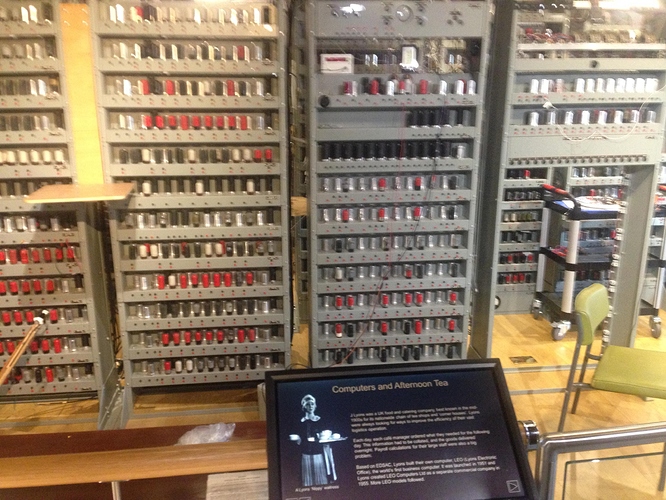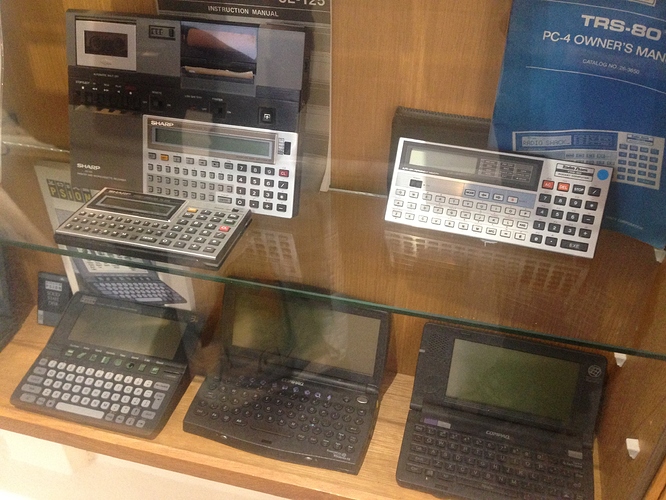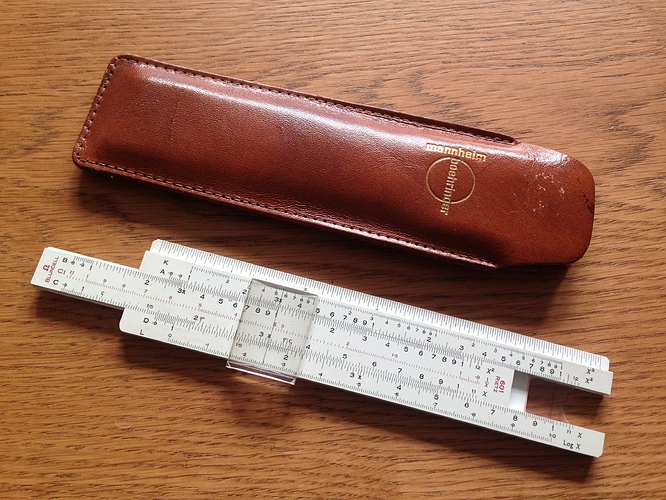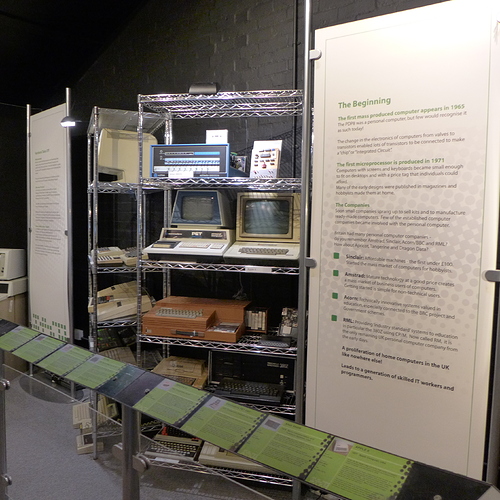I visited TNMoC last weekend, with @Revaldinho, and took some potato-quality photographs. One thing I did was type in a program and calculate 99 digits of Pi - on a Beeb, in Basic:
(The program is derived from one by Valentin Albillo - see here.)
I also wrote a very short ditty to print primes - that took a few iterations before I was happy with it:
There’s a thread here about that:
Short and sweet prime numbers in Basic
We went to a talk on twenty years of teaching Computing in the Open University (1971-1990), which reflected a new temporary exhibition. More about that below.
But first let’s see some computers at the museum. I’ve been loads of times so I no longer try to photograph everything. First some micros:
There’s approximately half a Cray 1, which allows good visibility of the wiring:
The EDSAC reconstruction proceeds - they have some subsystems working and might even have run programs, but it’s still expected to be more than a year before it’s ready:
Some handhelds and palmtops:
There’s a small gallery presently featuring the teaching of computing at the Open University - that’s the UK’s open access distance learning institution. They have a setup where you can probably type in some UCSD Pascal, and certainly run a few demos written in Pascal. And they are showing off some of their teaching machines. Before the PC and before the BBC Micro, they were at one point of the UK’s largest personal computer makers. They had the HEKTOR (8085 machine featuring RAMs by INMOS), the OPUS (8049 machine), the MICRO1 (again 8049), their own ANALOG COMPUTER, a LOGIC TUTOR, the DESMOND (based on 6805) and a massive robot arm. Anyhow, here’s the album:
There’s an interesting paper about Computing in the OU:
Butcher, P. G., & Greenberg, J. M. (1992). Educational computing at the Open University: the second decade. Education and Computing, 8(3), 201–215. doi:10.1016/0167-9287(92)92739-m
Oh, and finally, we put down £10 each to get an old slide rule from the punch bowl:
